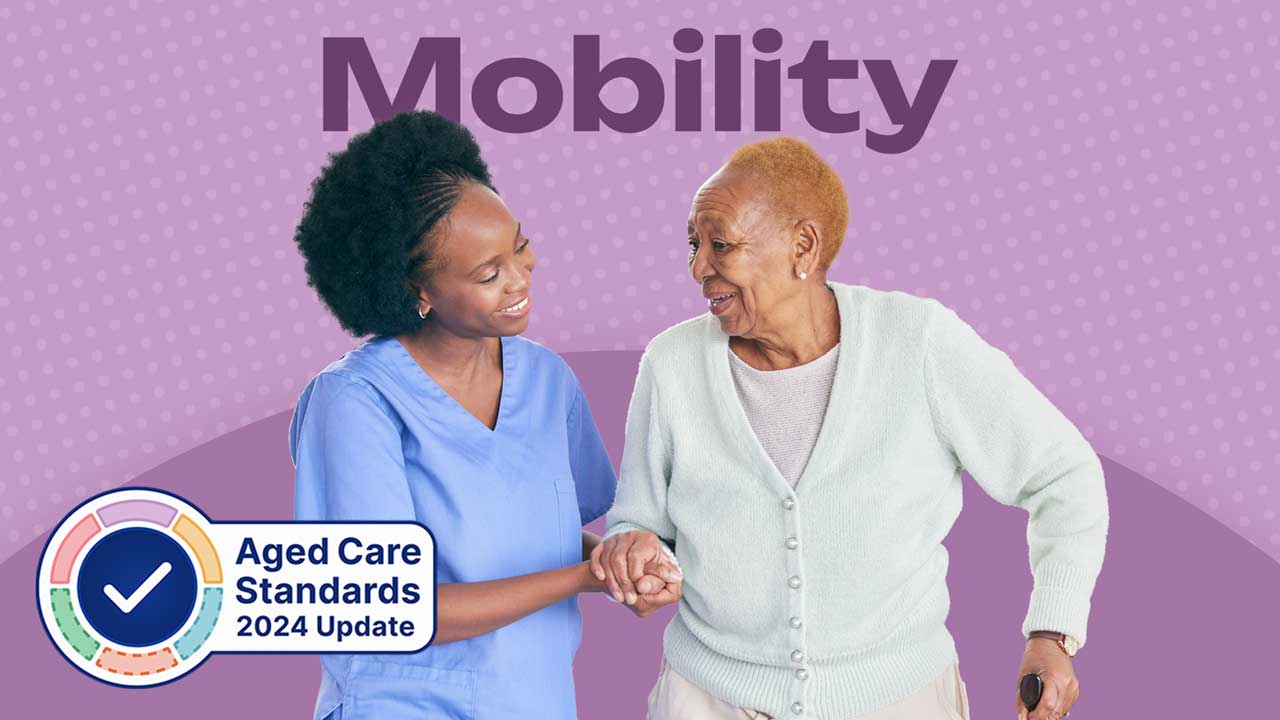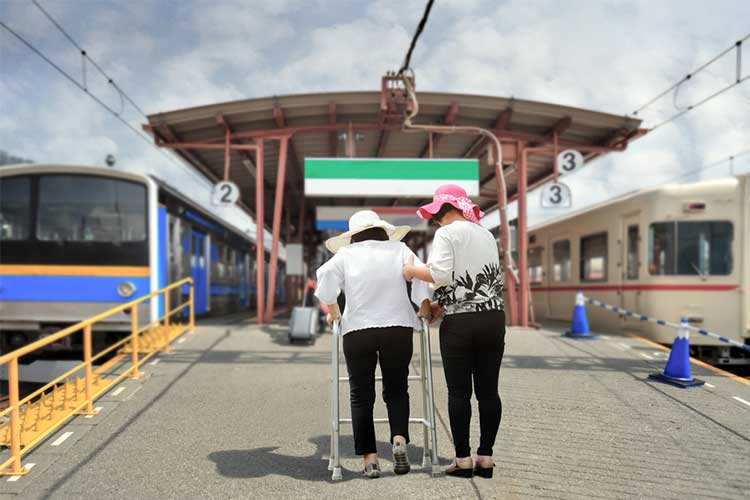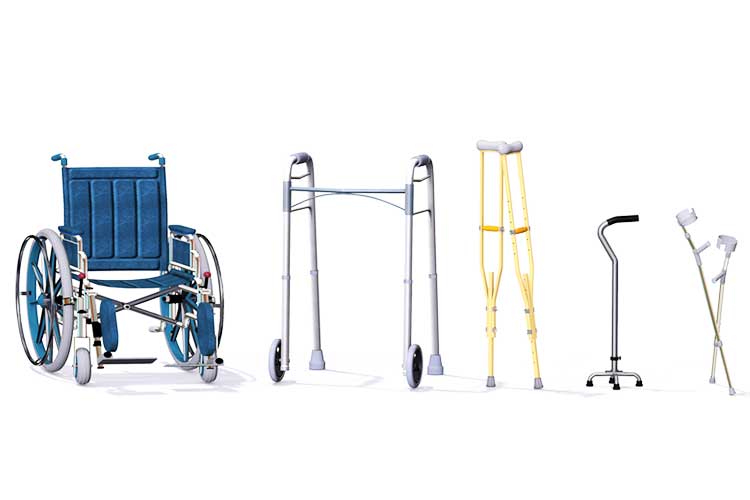Mobility Issues and Limitations in Aged Care
Published: 13 May 2024

Published: 13 May 2024

There are many considerations to keep in mind when caring for an older person who lives with impaired or limited mobility.
Mobility is closely tied to our sense of independence, but also our social connectedness, activity and security (Health.vic 2015a). A person's wellbeing can be considerably compromised by a mobility restriction.
Mobility issues become more of a concern with age, and in many cases, older people must face a period of adjusting from complete independence to suddenly relying on others for even minor tasks, such as brushing their teeth or basic grooming.
Mobility impairment can range from limitations of stamina to total paralysis (Illinois University Library 2023).
Often, a lack of functional mobility can contribute to health issues such as falls, incontinence, and malnutrition (Health.vic 2015a).
Under Standard 5: Clinical Care - Outcome 5.5: Clinical Safety (Action 5.5.4) of the strengthened Aged Care Quality Standards, aged care providers are required to reduce falls and harm from falls by optimising older people’s mobility to prevent functional decline (ACQSC 2024).

By encouraging and helping an older person to achieve or regain mobility, the risk of the following decreases:
(Health.vic 2015a)
In a situation in which drastically reduced mobility results in bed rest, there is a heightened risk of additional health complications:
(Health.vic 2015a)
Functional mobility is the capacity to move from one position to another, enabling participation in everyday life.
(Health.Vic 2015b)
Mobility restrictions and the use of gait aids can significantly impact a person’s ability to access their home and local area. This can cause difficulty maintaining and initiating social connections within their community (Health.vic 2015c).

Read: Understanding Mobility Aids
Mobility aids are pieces of equipment that facilitate movement for people who would otherwise be unable or limited in their attempt to move, or participate in or carry out a task. Mobility aids include:
(Better Health Channel 2023)
There are small changes that can be made to help an older person living with a mobility restriction to move around. These include:
(CEC 2017; Independent Living Centre 2019; Health.vic 2015c; Gramenz & Dymock 2023)
Exercise programs can be delivered in individual or group settings and may include strength, balance, functional retraining, and aerobic exercises. Group classes facilitate social interaction and may help counteract loneliness and isolation (Health.vic 2015c).
The exercise undertaken by older people with mobility limitations does not need to be strenuous. Research has shown that even minor increases in movement can make a difference in physical ability and prevent the likelihood of falls in people over the age of 65 (Aged Care Guide 2014).
Recommend that, if they are able, older people incorporate balance and strength training into their daily routines - examples include taking the stairs more often and balancing on one leg while brushing their teeth (Aged Care Guide 2014).
Informed by rigorous study, this approach to exercise has been shown to reduce falls by more than 30% (Aged Care Guide 2014).
Another way of exercising is through incidental activity - physical activity that occurs as part of a daily routine. Examples include:
(Health.vic 2015c)
As well as facilitating exercise, incidental activity is also beneficial in encouraging self-care (Health.vic 2015c).
These activities can be performed with supervision or assistance if required (Health.vic 2015c).

Every year, one in four older people experiences a fall (Healthdirect 2023). From 2019 to 2020 alone, over 133,000 older people were admitted to the hospital due to a fall (AIHW 2022).
Falls in older people are commonly associated with functional decline and loss of confidence, negatively impacting their mobility (Health.vic 2015d).
Despite this, falls are often preventable (Health.vic 2015d).
Using some of the strategies above can help to reduce the risk of falls.
A mobility impairment has the potential to severely impact the wellbeing of an older person, causing isolation, fear of falling, increased bed rest and dependency on others for simple tasks. Limited mobility can be navigated through accessible home environments, support and exercise programs.
Question 1 of 3
How many older adults over the age of 65 suffer falls each year?